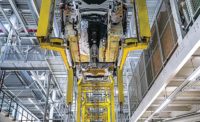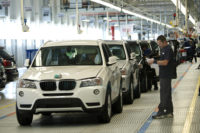MUNICH—Computer tomography (CT) has traditionally been used in the healthcare field. But, engineers at BMW recently started to use the technology to improve quality. They use it for prototype development, production and analysis—a first in the automotive industry.
The quality of BMW’s full range of vehicles, from Mini to Rolls-Royce, can now be controlled, even in the early stages of development. Scans are performed by four robots that move around the outside of a prototype vehicle to produce several thousand cross-sectional images. The scans are used for detailed analysis of innovations, new materials and assembly processes.
“Until now, vehicles have had to be dismantled for analysis, but CT allows checks to be carried out with the vehicle completely intact,” says Udo Hanle, head of production integration and pilot plant at BMW. “The use of this state-of-the-art system is a major step forward for us as [we] improve the quality of our products even further.
“We can now analyze our prototypes in minute detail without having to dismantle them first,” adds Hanle. “The new system allows us to examine our vehicles in a way that wouldn’t be possible with conventional, static computer tomography systems.
“The system takes quality assurance to an entirely new level,” claims Hanle. “This degree of detail is required for a range of reasons. For instance, [we use it] to check welds and punch screw connections.
“[We also] verify body condition before and after painting, where extreme temperatures can affect adhesive bonds,” says Hanle. “Findings from the scan are then used as a basis for making targeted modifications to series production.”



